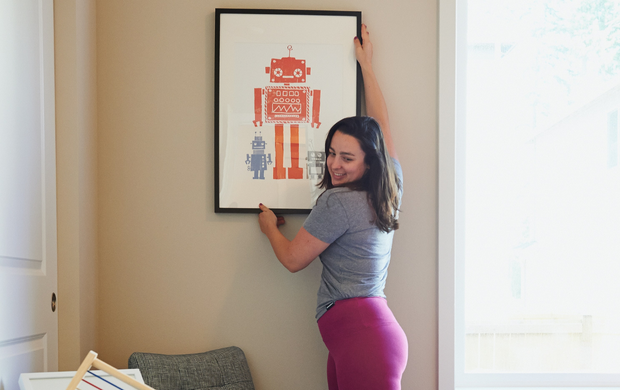Interior design often draws attention to the big, eye-catching elements – the statement sofa, the bold feature wall, the stylish dining table that ties a room together. Yet behind every polished, elegant space lies a world of hidden craftsmanship. In fact, many of the most striking interiors rely not just on aesthetics but on the simple, dependable hardware that keeps everything safely in place. From shelving to wall panelling, the humble nails and screws used in the first steps of a project often make all the difference to the final result.
The Foundation of Interior Beauty – Why Fixings Matter
When planning a design project, it’s natural to focus on colours, fabrics, lighting, and furniture. However, the foundation of a well-finished space starts much earlier. Choosing the right fixings ensures that everything from floating shelves to wall panelling stays secure, long-lasting, and visually seamless.
The invisible support system
Every stylish room needs structure. Floating bookcases, discreet picture ledges, built-in cabinetry, and panelling all rely on the right fixings. Without the appropriate nails or screws, even the most beautifully crafted piece of furniture can shift, sag, or fail entirely. Not only is this inconvenient, but it can also be unsafe.
Choosing thoughtfully for different materials
Different materials require their own specific approach. Lightweight wood panelling may be fine with small panel pins, but denser hardwood cabinetry will require wood screws designed to grip securely. Drywall, plaster, and masonry all call for specialised fixings or wall plugs to support weight properly. Thoughtful planning at this stage helps maintain both safety and the elegant look you want to achieve.
Blending strength with aesthetics
Even in exposed shelving, decorative beams, or industrial-style metalwork choosing the right style and finish contributes to the room’s overall feel. Brass, blackened steel, and brushed chrome screws can complement contemporary or vintage interiors while still offering durability. The smallest details can make a design feel intentional and cohesive.
Design Meets Practicality – Using the Right Fixings in Style Projects
Decorating or updating your interiors often involves a mix of creativity and craftsmanship. Whether you’re renovating a single room or simply refreshing your décor, understanding which fixings work best will help you achieve a professional-looking finish that stands the test of time.
Wall panelling and feature walls
Panelling has made a strong return in modern interior design, from Georgian-inspired grids to sleek vertical slats. While the finished effect draws the eye, the success of the installation relies on secure fastening. Nails often work best for lighter MDF or pine panels, while screws provide firmer support for heavier woods or structural additions. Ensuring everything is flush and evenly spaced makes the final painted finish truly shine.
Built-in cabinetry and shelving
Built-ins offer an elegant way to maximise space, add storage, and create a high-end look. But nothing ruins a well-designed unit faster than sagging shelves or shaky joins. Wood screws with deep threads designed for strong grip help maintain the integrity of cabinets and floating shelves. Countersunk screws sit flush for a neat, concealed look, ideal when units will be painted or laminated.
Creating stylish displays without visible fixings
Minimalist interiors often favour an almost weightless look, which means hiding fixings becomes even more important. Clever design tricks such as using pocket-hole screws, construction adhesive combined with nails, or mounting strips allow fixtures to appear seamless. This approach works beautifully for:
- Framed picture galleries
- Slimline shelving
- Decorative mouldings
- Feature alcoves or niches
The result is a polished, contemporary space where nothing distracts from the design flow.
Upcycling and furniture restoration
From breathing new life into a vintage dresser to building a bespoke coffee table, the right fixings ensure your work lasts. Older pieces may require reinforcing joints or replacing damaged fixings, and selecting screws or nails that complement the era or style of the furniture can help maintain its character. Brass screws, for instance, pair beautifully with mid-century or antique pieces.
The Finishing Touch – Making Details Feel Intentional
Beautiful interior design is about creating harmony through small, thoughtful decisions. Fixings influence not only the integrity of a project but also its elegance.
Keep it cohesive
Even when fixings are concealed, consistency still matters. Using the same type of screw or nail across a project helps ensure uniformity in strength and spacing. When fixings will be visible choosing a finish that complements your colour palette subtly enhances the room’s overall style.
When to hide and when to highlight
Although many design styles aim to hide fixings, there are moments when you can celebrate them. Industrial, rustic, and contemporary styles often embrace visible hardware, turning structural components into aesthetic features. Exposed screw heads in matte black or brushed steel can add texture and interest while still feeling modern.
Investing in quality for long-term results
Cheap fixings may be tempting, but high-quality nails and screws are worth the investment. They reduce the risk of corrosion, provide more reliable hold, and often look better when exposed. Over time, this helps maintain the value and beauty of your home improvements.
Designing with confidence
Ultimately, the small choices you make behind the scenes shape how your home looks, feels, and functions. Understanding the role of fixings empowers you to take on bigger design projects with confidence.








